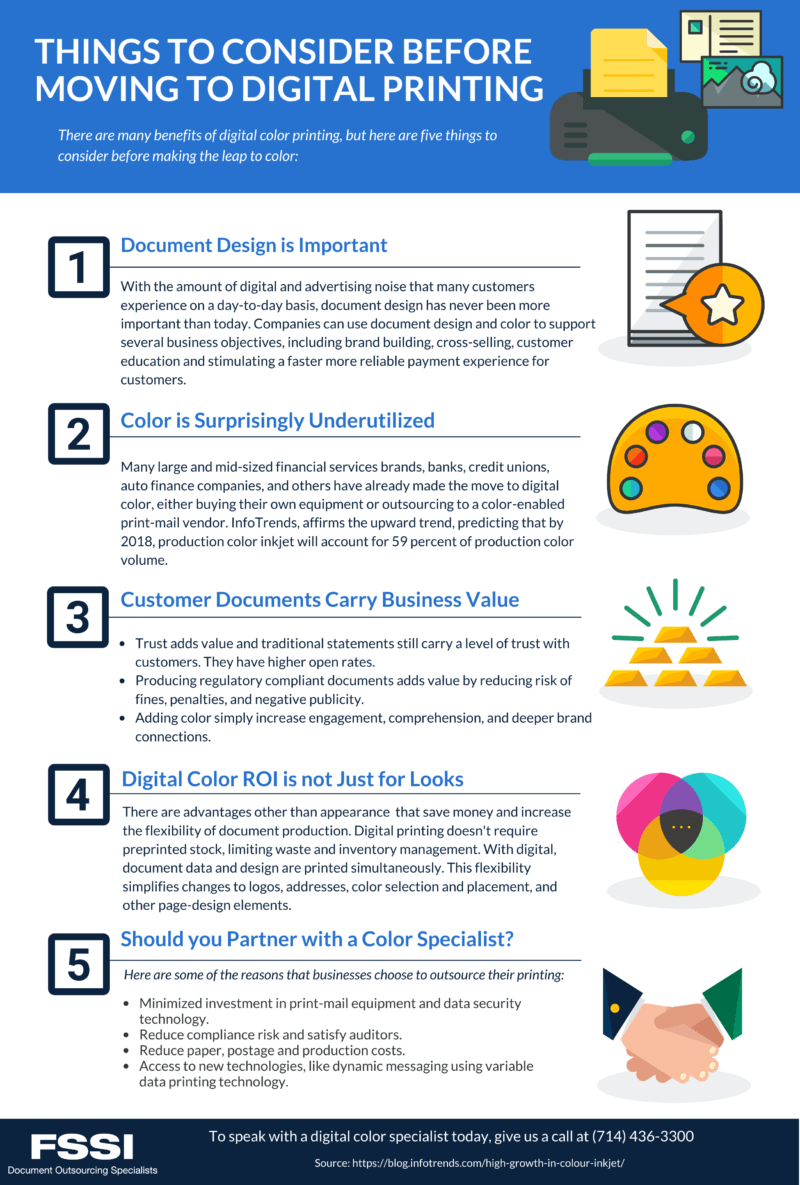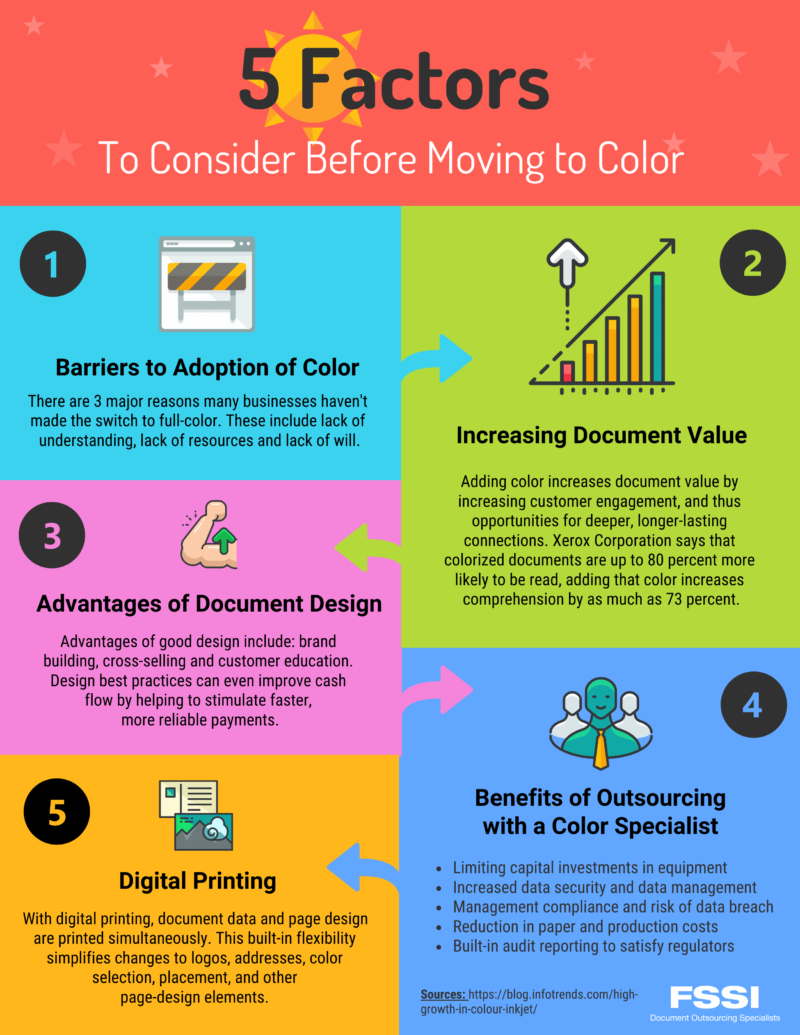The Best Strategy To Use For Digital Printing
Table of ContentsDigital Printing Fundamentals ExplainedAn Unbiased View of Digital PrintingNot known Facts About Digital PrintingSome Known Facts About Digital Printing.The Ultimate Guide To Digital Printing6 Simple Techniques For Digital Printing
Variable data printing, such as straight mail with personalized codes and addresses, is ideally matched for electronic printing. Digital quick printing only needs four actions of style, evaluation, printing and binding to get everything done. Digital quick printing has an exceptional advantage: print on demand.According to PMMI, digital printing permits brands and manufacturers to react quickly to consumer demands while boosting the supply chain, lowering warehousing expense and waste, and appreciating faster time to market. That all audios fantastic, yet exactly how does this technology do all that? The major differentiator of these modern technologies is that there are no set-up fees and no plates with electronic printing.
The Only Guide to Digital Printing
According to Wikipedia, the best difference in between electronic printing and conventional approaches such as lithography, flexography, gravure, or letterpress - Digital Printing is that there is no need to replace printing plates in electronic printing, whereas in these analog printing approaches the plates are repeatedly replaced. This leads to quicker turn-around time and decreases expense when making use of digital printing.
Fast manufacturing suggests obtaining your product to market faster. It likewise indicates it's less complicated and faster to make changes later on, when you alter a recipe, add a SKU, or produce seasonal product packaging. Digital printing is very versatile, so it's very easy to make changes to the package design promptly. It all returns to home plates.
With traditional printing methods, short-run printing is just not possible. Since a terrific design can make or damage your product, electronic printing consistently creates high-quality, clear and vivid graphics each time.
Digital printing is the procedure of printing digital-based pictures directly onto a selection of media substrates. There is no requirement for a printing plate, unlike with offset printing. Digital documents such as PDFs or desktop computer publishing documents can be sent directly to the electronic printing press to publish on paper, photo paper, canvas, textile, synthetics, cardstock and various other substrates.
The Single Strategy To Use For Digital Printing
According to PMMI, electronic printing allows brands and manufacturers to respond promptly to customer demands while enhancing the supply chain, reducing warehousing expense and waste, and page enjoying faster time to market. That all noises great, but exactly how does this technology do all that? The major differentiator of these innovations is that there are no set up fees and no plates with electronic printing.
According to Wikipedia, the best distinction in between electronic printing and conventional methods such as lithography, flexography, gravure, or letterpress is that there is no demand to change printing plates in electronic printing, whereas in these analog printing approaches home plates are repeatedly changed. This causes quicker turnaround time and lowers price when utilizing electronic printing.

The 20-Second Trick For Digital Printing
A lot more stock can indicate more waste in the future. With traditional printing methods, short-run printing is just not possible. Since a terrific layout can make or break your product, electronic printing consistently develops high-quality, clear and colorful graphics each time. Digital printing on versatile bags adds the bright, dynamic, and accurate graphics that virtually beckon customers to get to out and touch them.

According to PMMI, electronic printing enables brands and manufacturers to react quickly to customer demands while boosting the supply chain, lowering warehousing expense and waste, and enjoying faster time to market. That all sounds terrific, but exactly how does this technology do all that? The significant differentiator of these modern technologies is that there are no set-up fees and no plates with electronic printing.
Fascination About Digital Printing
According to Wikipedia, the best distinction in between digital printing and typical methods such as lithography, flexography, gravure, or letterpress is that there is no demand to replace printing plates in electronic printing, whereas in these analog printing methods home plates are consistently changed. This causes quicker turnaround time and decreases cost when utilizing electronic printing.
Digital printing is extremely versatile, so it's simple to make changes to the package design promptly. It all goes back to the plates.

Digital Printing Fundamentals Explained
Digital printing is link the procedure of printing digital-based pictures directly onto a selection of media substratums. There is no demand for a printing plate, unlike with countered printing. Digital documents such as PDFs or desktop computer publishing files can be sent directly to the electronic printing machine to publish theoretically, picture paper, canvas, material, synthetics, cardstock and other substrates.